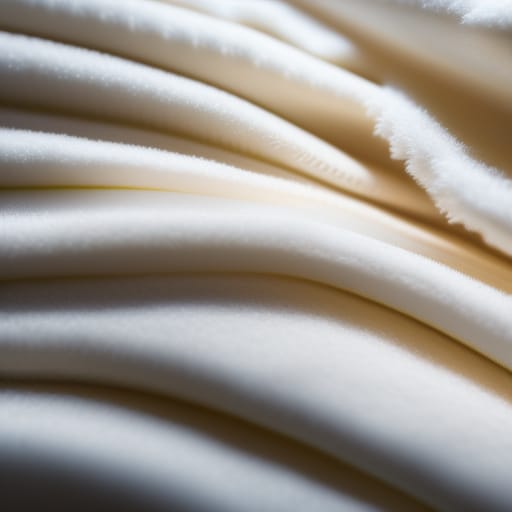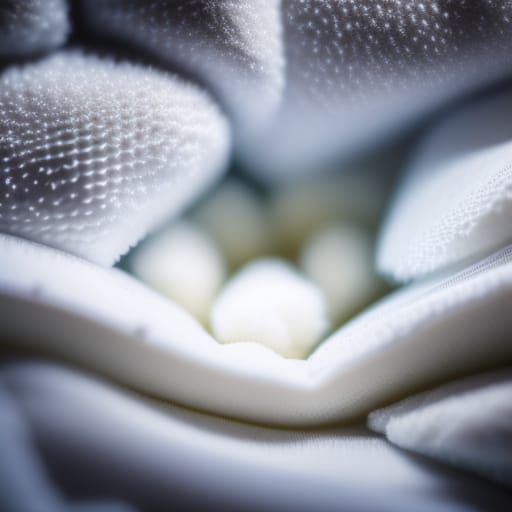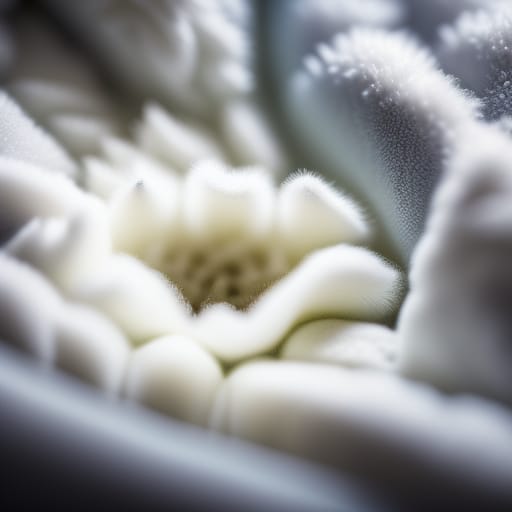Washing a down comforter can seem like an intimidating task. With their large size and delicate fabric, it’s understandable to feel unsure about the best washing method.
Properly washing a down comforter is important for maintaining its loft and extending its lifespan. With the right techniques, you can keep your down comforter clean, fluffy and hygienic.
This beginner’s guide will walk you through everything you need to know about washing a down comforter at home. You’ll learn how to prep, wash, dry and care for your down-filled bedding.
Why Proper Washing Matters for Down Comforters
Down comforters are designed differently than regular comforters. The filling consists of soft, fluffy down clusters that trap air to provide insulation and loft.
When washed improperly, the agitation can damage the down, causing it to compress and lose loft. This leads to a flat, lumpy comforter.
Washing also removes natural oils that help down clusters remain separated and inflated. Without these oils, the feathers can clump together when dry.
That’s why it’s critical to use the right washing techniques for down. When cared for properly, a down comforter can last over 10 years.
An Introduction to Down Comforters
Before washing your down comforter, it’s helpful to understand what makes it unique:
- Fill power – This measures the loft and quality of the down filling. Higher fill powers of 600-900+ mean more insulation and fluffiness.
- Down cluster – The individual filling pieces inside the comforter. Quality down will have soft, silky clusters.
- Baffle box construction – Small fabric boxes that compartmentalize the down into sections. This helps the filling stay evenly distributed.
- Thread count – The number of threads woven into a square inch of shell fabric. Higher thread counts like 300-600 indicate a smoother, more durable cover.
- Downproof – Tightly woven fabric that prevents the down from poking through. Essential for keeping fill contained.
Understanding the composition of your down comforter helps you care for it properly. Now let’s look at the best practices for washing.
Agitation Can Damage Down Clusters
The turbulent motion of a washing machine can unravel down clusters. This causes the feathers to separate and lose their fluffiness.
Washing Removes Natural Oils
Down contains lanolin oils that help the clusters maintain their structure. When washed away, the feathers have nothing to hold them together.
Heat and Detergents Can Harm Fabrics
High heat settings and harsh detergents strip the natural oils from down. This weakens and shreds down cluster tips. The fabric cover can also fade and deteriorate.
That’s why a delicate, low-agitation approach is ideal for washing down comforters. Let’s look at specific guidance for pre-treating, washing and drying.
Factors to Consider Before Washing
Before starting the wash process, keep these tips in mind:
- Inspect manufacturer’s care label – Follow any specific instructions provided.
- Check size and density – Oversized or extra dense comforters may require professional cleaning.
- Use commercial washer – Home machines often lack the capacity for king size comforters.
- Wash alone – Load only the comforter itself to reduce friction and entanglement.
- Select mild detergent – Use a gentle, down-safe formula without bleach or optical brighteners.
- Pre-treat stains – Spot clean any visible stains prior to overall washing.
- Check for holes – Fill leaks before washing to prevent down from escaping through damaged fabric.
Following these preliminary steps will help ensure you safely wash your down comforter at home.
Common Mistakes to Avoid
It’s also helpful to know what NOT to do when washing your down comforter:
- Machine drying – This causes extreme cluster damage. Always air dry down.
- Overloading – Crowding leads to uneven cleaning and cluster clumping.
- Aggressive detergent – Harsh chemicals strip protective oils from down.
- Too frequent washing – Excessive cleaning degrades down and fabrics over time.
- Insufficient rinsing – Leftover detergent residue clumps down and degrades fabrics.
- Poor storage – Prolonged compression flattens loft. Store fully aired out.
Avoiding these missteps will keep your down comforter fluffy and functional for years. Now let’s get into the washing process.
Step-by-Step: Washing a Down Comforter at Home
Follow this method for safely washing and revitalizing your down comforter at home:
1. Prepare the Comforter
- Shake out and gently beat the comforter to loosen dirt and revitalize flattened areas.
- Check for stains and spot treat if needed using a delicate stain remover or mild detergent.
- Zip or button any duvet cover closed so down doesn’t escape through an open end.
- Ensure ties, hooks or corner loops are secure so they don’t catch in the machine.
2. Set Up the Washing Machine
- Select the gentle or delicate cycle setting. This lowers agitation.
- Choose a cold water wash setting. Hot water can damage and shrink fabrics.
- Pick the lowest spin speed or no spin if possible. High speed extracts more oils.
- Ensure machine capacity is not exceeded for best cleaning and protection.
3. Add a Down-Safe Detergent
- Use a mild detergent made specifically for down, feathers and delicates.
- Check the detergent concentration and add the appropriate measured amount.
- Avoid regular laundry detergent and fabric softeners which can damage down.
- For heavy soiling, allow the comforter to soak prior to starting the wash cycle.
4. Load the Comforter Properly
- Load the comforter in loose clumps to distribute weight evenly.
- Add a couple of clean tennis balls to help break up lumps during washing.
- Make sure comforter is not tightly packed in. It should float and tumble freely.
- Select the wash setting and let the machine gently clean the comforter.
5. Rinse Thoroughly
- Run an extra rinse cycle after washing to remove all detergent residue.
- You may need to rinse twice depending on your machine’s efficiency.
- Remaining soap can make down clusters clump together.
- Inspect comforter after rinsing – if detergent suds appear, repeat rinse.
Proper Drying Techniques for Down Comforters
Drying is just as important as washing for down comforters. Follow these steps:
Air Dry Outside or Indoors
Never machine dry a down comforter – only air dry. You can hang it outdoors or inside:
- Outside: Hang on a clothesline in a shaded area. The fresh air helps revive the down.
- Indoors: Drape over two clothes drying racks. Set up near a window with moving air.
Fluff and Loosen Sections
As the comforter dries, periodically check and fluff any damp sections. Gently shake and pull apart to maintain loft.
Allow Plenty of Drying Time
Thick down comforters can take 12-24 hours to fully air dry, sometimes longer in humid climates. Don’t rush – completely dried down will be springy.
Use Tennis Balls Again
Once dry, toss several tennis balls in the dryer with the comforter. Tumble on low heat for 10 minutes. This further separates down.
Proper drying is vital for maximizing loft and cluster rebound. Next, let’s go over techniques for re-fluffing the down.

Why Fluffing Your Comforter Matters
Fluffing helps restore your comforter’s warm, cushy loft after washing. Here are some key reasons to fluff:
- Separates compressed clusters
- Allows trapped moisture to escape
- Distributes fill evenly
- Minimizes clumping
- “Resets” insulating ability
Neglecting to fluff leads to thin, lumpy sections that lose insulating value.
Tips for Optimizing Fluffiness
Follow these tips for thoroughly fluffing your comforter after washing:
- Shake it out – Lift and gently shake the comforter to loosen filling.
- Massage sections – Knead and squeeze gently to break up matted clusters.
- Use clean tennis balls – Place 2-3 in the dryer with comforter on air fluff.
- Air out – Hang outdoors or drape over furniture to naturally re-loft.
- Re-dry if needed – If moisture remains, put back in the dryer on low briefly.
- Be patient – Fluffing can take hours or days for down to fully expand.
Take the time to properly fluff all sections. This restores your comforter’s soft “sleeping on a cloud” feel.
Caring for Your Comforter After Washing
Once you’ve washed and thoroughly dried your down comforter, a little extra care will keep it fresh and lofty:
Allow Moisture to Evaporate Before Storage
Let your comforter air out for several hours before folding up to prevent mildew growth in storage.
Use Breathable Storage
Store in a cotton, mesh or breathable comforter storage bag, not plastic. This allows air circulation.
Give it a Gentle Shake
Before bedding down, gently shake out and fluff up sections to maximize plushness.
Wash Max Twice Yearly
Wash a down comforter once or twice yearly at most. Overwashing damages down and fabrics over time.
Consider Professional Cleaning
For a deep clean, professionals have commercial equipment to clean and fluff down bedding.
Show your down comforter some TLC between washes and it will provide cozy comfort for years.
When to Consider Professional Down Comforter Cleaning
While home washing is suitable for most down comforters, some instances may call for professional cleaning:
- Extremely oversized comforters – Professional machines have greater capacity
- Heavily soiled – If home washing cannot get it fully clean
- Clumping issues – Industrial dryers prevent and fix clumping better
- Treatment for mildew or dust mites – May require specialized sanitizing
- Loft needs major restoring – Powerful fluffing capabilities
- Concerns over damaging item – Experts are trained in delicates care
- Unsure of proper washing method – Can trust process to professionals
Consider evaluating cost vs. benefit if you are worried about damaging your high end down comforter at home.

Key Takeaways: Caring for Your Down Comforter
Caring properly for your down comforter ensures its longevity so you can enjoy its plush warmth for years. Here are the key tips to remember:
- Pre-treat stains gently before washing
- Use a front loading washer on delicate, cold water setting
- Choose a down-specific, low-sudsing detergent
- Air dry thoroughly before storage
- Fluff frequently to maintain maximum loft
- Wash only once or twice yearly at most
- Consider professional cleaning for oversized/delicate items
- Allow to fully dry and re-fluff between washes
- Store uncompressed in breathable bag or container
Following this beginner’s guide will keep your comforter clean, fluffy and functional for the long haul. Soon you’ll be washing your down bedding with confidence.|
Frequently Asked Questions
What is the best way to wash a down comforter at home?
Use a front-loading machine, delicate cycle, and cold water with a mild detergent made specifically for down. Wash with a few tennis balls to prevent clumping. Rinse thoroughly. Air dry completely before storage or use.
How often should I wash my down comforter?
Only wash a down comforter once or twice per year. Frequent washing strips the natural lanolin oils that help down clusters remain separated and fluffy. Overwashing can damage down over time.
Why does my down comforter become flat and lumpy after washing?
This happens when down clusters get damaged, compressed, or wet during washing. Make sure to use a gentle cycle and thoroughly air dry the comforter. Fluff and massage areas to revive loft. Use tennis balls in the dryer to separate clusters.
What is the best way to dry a washed down comforter at home?
Never machine dry down comforters. Always air dry fully, either hung outdoors or draped indoors near a window. Periodically check and fluff sections as it dries. Use tennis balls in the dryer once fully dry.
How can I restore loft and fluffiness to my flattened down comforter?
Fluff and gently knead sections to break up matted down clusters. Hang outside on a breezy day or use clean tennis balls in the dryer to re-separate and expand the filling. It may take up to 24 hours to fully re-loft.








